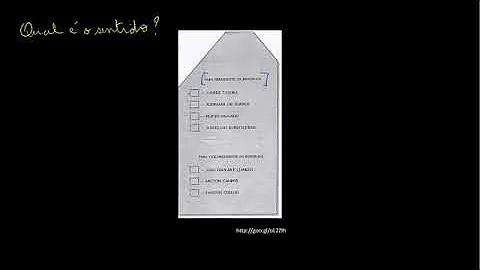Quais são os Five Senses?
Índice
- Quais são os Five Senses?
- Quais são os action verbs?
- O que são verbos sensoriais?
- Quais são os nomes dos cinco sentidos em inglês?
- Quais os nomes dos sentidos em inglês?
- O que é Action verb?
- Quais são os non Action verbs?
- O que significa pessoa sensorial?
- When do you use verbs of the senses?
- How are verbs of the senses used in progressive form?
- How are the verbs taste and smell used in English?
- When to use hear and see as verbs?

Quais são os Five Senses?
pessoas usavam somente os cinco sentidos primários para sobreviverem: audição, visão, paladar, olfato e tato. When we eat we use our five senses: sight, hearing, touch, taste and smell.
Quais são os action verbs?
Os verbos de ação representam ações físicas e tangíveis, que podem ser percebidas através de um dos cinco sentidos, por isso se chamam “dynamic verbs” em inglês. Entre os verbos de ação, também se encontram os que falam de atividades mais abstratas, como pensar (think) ou aprender (learn).
O que são verbos sensoriais?
Chamamos os verbos dos sentidos em inglês de sense verbs e, assim como em português, temos the sight (a visão), the hearing (a audição), the tast (o paladar), the touch (o tato) e the smell (o olfato). ...
Quais são os nomes dos cinco sentidos em inglês?
Os verbos dos cinco sentidos
- The eyes (Os olhos)
- The nose (O nariz)
- The hands (As mãos)
- The ears (As orelhas)
- The mouth (A boca)
Quais os nomes dos sentidos em inglês?
Quais são os 5 sentidos e sentidos em inglês
- SIGHT (VISÃO)
- TOUCH (TATO)
- HEARING (AUDIÇÃO)
- SMELL (OLFATO)
- TASTE (PALADAR)
O que é Action verb?
Verb is the action that one wants to accomplish (increase or decrease the production [...] staff, stock, etc.). O Verbo é a ação que se quer realizar (aumentar ou diminuir a produção os funcionários, [...] o estoque, etc).
Quais são os non Action verbs?
"Non action verbs" são verbos de estado, ou verbos de ligação. Verbos que não exprimem ação, mas podem carregar outras ideias, tais como: estado, verdades, sentidos, cognição, emoção etc.
O que significa pessoa sensorial?
A sensação é uma função de percepção. Pessoas com uma preferência sensorial confiam no que vêem no mundo concreto. São pessoas orientadas para os detalhes e realistas, frequentemente chamadas de “pé no chão” e fundamentadas.
When do you use verbs of the senses?
- When we use the verbs feel, hear, see, smell, or taste to talk about the impressions that we receive through our five senses (touch, hearing, sight, smell, taste), they are all non-action verbs and cannot be used in progressive forms. You smell nice. (NOT you are smelling) This soup tastes fantastic. What did you put in it? (NOT is tasting)
How are verbs of the senses used in progressive form?
- When we use the verbs feel, hear, see, smell, or taste to talk about the impressions that we receive through our five senses (touch, hearing, sight, smell, taste), they are all non-action verbs and cannot be used in progressive forms. You smell nice. (NOT you are smelling) This soup tastes fantastic. What did you put in it?
How are the verbs taste and smell used in English?
- The verbs “taste” and “smell” can also be followed by “of” and a noun. The verbs “taste” and “smell” can also be followed by “of” and a noun. @ABAEnglish “It smells of flowers in here, did you buy roses for me?” “Can you taste that? This tea tastes of mint” We can use “like” to make comparisons. Let’s see some examples:
When to use hear and see as verbs?
- We normally use can with these verbs to refer to something happening at the moment. hear and see can also be dynamic verbs and used in the progressive form, but with a different meaning: I’ve been hearing good things about you recently. = I have been receiving information.















